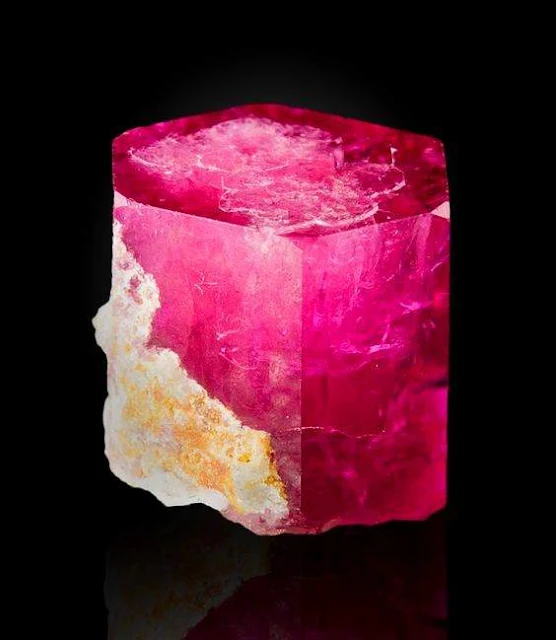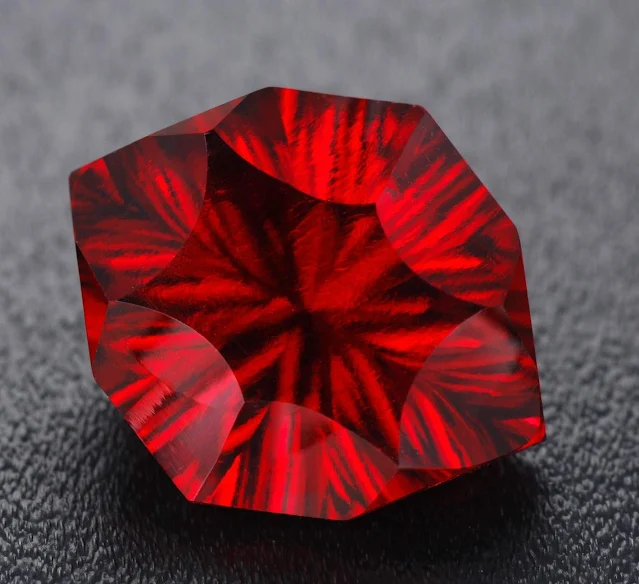Why is Red Beryl So Rare
Designated the world's rarest coloured gemstone in 2006 by the Jewellers association.
It is estimated that one crystal of red beryl is found for every 150,000 gem-quality diamonds. Red beryl only occurs in three locations in the USA, with the only decent specimens coming from the now moribund Ruby Violet mine in Utah.
The matrix grows in a particular kind of silica rich magma formed during either crustal melting (like in a mountain building event) or when magmas such as basalt gradually differentiate during cooling. As crystals of olivine, pyroxene and plagioclase form and settle in the magma chamber, the remaining lava becomes enriched in silica and elements that do not fit into the structure of these minerals (known as incompatible elements and extensively used in geochemistry).
Beryl, of course, the same mineral that gives us lovely blue aquamarines or yellow heliodor (when coloured by Iron), green emerald (chromium) and pink morganite (manganese). It usually forms in pegmatites, the last remains of granites to slowly crystallise, producing large crystals sometimes filled with rare elements distilled out of the planet by volcanism. Red beryl receives its red color from trace amounts of manganese.
Red beryl is a rare mineral because its formation requires a unique geochemical environment. In this case, though the Beryl formed directly from a gaseous state, when a younger rhyolite intruded beneath the one in which it formed some few million years later, and the gasses flowed up as it cooled by interaction with groundwater in the older lava to precipitate the gems at temperatures of 300-650 Celsius. The gases flowed along the columnar joints (like those at Giant's Causeway in Ireland) forming beryl and topaz, the gemmy relics of tectonic forces some 22 million years ago.
It was originally called Bixbite (after the American mineralogist who discovered in 1904), but the name red beryl was adopted to avoid confusion with Bixbyite, also named after Maynard Bixby. It has also been mis-sold under the name red emerald (since emerald is by definition green), and can be visually confused with beryl's pink cousin pezzotaite. A laboratory certificate is strongly recommended when buying one. Like pezzotaite, the colour comes from impurities of manganese.
The Ruby Violet mine was first found by a Uranium prospector in 1958, and since then has had a long series of owners, all of whom have run into the problem that the mineralisation is so rare that the mine can't produce enough to be financially viable. Coring in the early noughties determined that large scale mining techniques would not be viable, and the claim has been inactive ever since, due to the extremely high price tag. Since the supply is so limited, red beryl deserves its moniker of the rarest coloured gem on Earth.
 |
| Red Beryl crystal |









